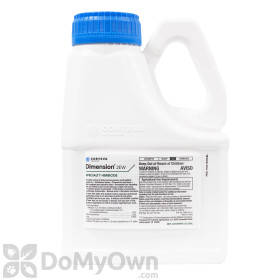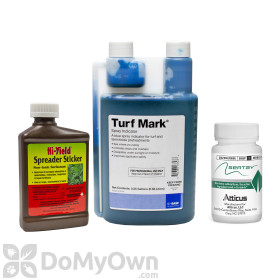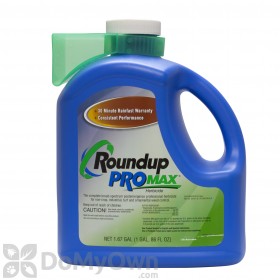Poa annua is a grassy weed that can be unsightly in your lawn during the spring when seed heads bloom and in the summer when the poa annua weed dies.
Poa annua, also known as annual bluegrass, seeds can lay dormant for years before growing making treatment tricky. That's why a two-step approach to poa annua control may be necessary. Both pre-emergents and post-emergent herbicides will be necessary to control poa annua in your yard.
Continue reading to learn more, or click on one of the methods below to improve your poa annua treatment.
Apply a Pre-Emergent Herbicide

As their name suggests, pre-emergent herbicides are applied before weeds emerge. They help prevent new weeds from growing in your lawn from seeds. In the case of poa annua, that means applying a pre-emergent herbicide like Dimension 2EW, Hi-Yield Weed and Grass Stopper, Barricade 4FL, or another pre-emergent labeled for poa annua control on your lawn before poa annua seeds begin to germinate.
Read the label of any pre-emergent you may consider using to be sure it is compatible with the type of lawn you have. Not all pre-emergents can be used on all grass types.
Knowing when poa annua germinates is key to ensuring you apply your pre-emergent herbicide at the right time. Poa annua (annual bluegrass weeds) will begin to germinate in late summer or early fall when soil temperatures drop below 70 degrees. Apply your pre-emergents in the fall before the first frost occurs, before the soil temperature reaches 70 degrees or below to make sure it is down before germination begins. If you live in an area that does not have frost, you would apply before temperatures drop. The timing of your application depends on where you live. Consult our lawn care calendars to determine when to apply your pre-emergent herbicide treatment.
We strongly recommend that you apply two fall pre-emergent herbicide treatments, spaced approximately 6 to 8 weeks apart from one another. This will help ensure your entire lawn is treated, reducing the number of spots you might miss with one treatment. It will also increase the amount of time the pre-emergent treatment will last. This helps give you longer coverage and protection from poa annua weed seeds that may germinate later in the season.
You will also need to apply a spring pre-emergent herbicide treatment sometime between late January and early May, before temperatures rise and weeds begin to germinate. Again, consult our seasonal calendars or contact your local extension office for timing advice.
Watch the video below to learn how to apply a pre-emergent herbicide.
Products needed for Step 1
Apply a Post-Emergent Herbicide
A post-emergent herbicide treatment can be used to kill any poa annua that grows in the spring and was missed by your pre-emergent herbicide treatment. Post-emergent herbicides work best when used in conjunction with pre-emergent herbicide treatments.
Selecting a poa annua killer treatment depends on the type of (desirable) grass you have and the area being treated. As poa annua is technically a cool season grass, it is very similar to other cool season grasses, like Kentucky bluegrass or ryegrass. If you have a cool season grass, killing poa annua with a spot treatment (Step 3) may be your best option. Be sure to read the label of your post-emergent herbicide to be sure the product is appropriate for the area of application.
Watch the video below to learn how to apply a post-emergent herbicide to your lawn.
Products needed for Step 2
(Optional) Spot Treat Your Yard
If you still have a few poa annua weeds in your lawn after both pre- and post-emergent herbicide treatments, try using a non-selective herbicide that is labeled as a post-emergent, like Roundup Pro Max or Roundup QuickPro, to spot treat the weeds. The non-selective post-emergent herbicide will kill poa annua weeds and the turf where it is sprayed. Be sure to read the label of your non-selective post-emergent herbicide to understand the impact it will have on your lawn.
Keep in mind, poa annua will die and turn brown in the summer when temperatures are consistently 85 degrees Fahrenheit and higher. If you have hot days on the horizon, you may want to wait before applying a spot treatment.
Products needed for Step 3
Not sure if you have poa annua in your yard? Read our guide on what poa annua looks like to make a positive identification before you treat. If you have had problems with poa annua in the past, read our guide on how to prevent poa annua from growing to learn how to be proactive in your treatment process. Click the right arrow below to read more.














